Have you seen the serene-looking minimalist spaces on Pinterest lately and wondered how to recreate them in your own personal style? Well, first, you need to understand the minimalist mindset. A minimalist space is a pared-down, well-edited interior punctuated by meaningful decor with a specific intention: to create simplicity, beauty, functionality, and a sense of calm.
Two essential priorities in minimalism are eliminating excess and freeing up space on walls and floors. However, you don’t need to discard all your furnishings and buy expensive decor. Instead, like an expert photographer, you’ll select each item for your composition with intention.
If you need a minimalist solution for storing and displaying books and collectibles, consider floating shelves –– you can finally throw out those clunky bookcases that take up so much space on your walls and floors! This guide will focus on styling floating shelves for a minimalist home. We’ll cover how to pick a minimalist color palette, choose the right shelf decor, arrange shelves, and much more. So, keep reading.
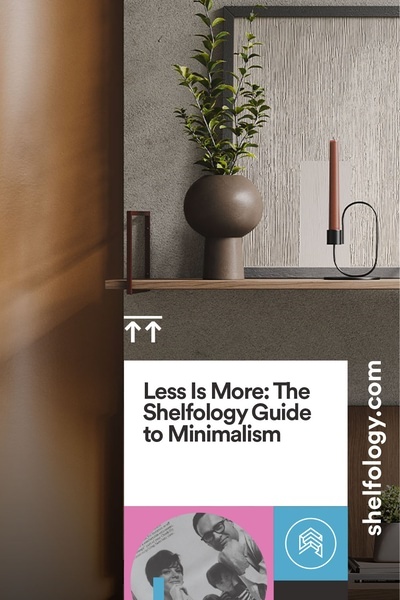
How To Style Shelves for a Minimalist Space
Decide On a Color Palette
Your color palette creates the backdrop for your entire home or office. Think of it like the colors in a painting distributed among different areas of a canvas. Your color palette should be cohesive in your home, from your floating shelves to the walls, furniture, and accents. In a minimalist home, color palettes are simple.
Neutral and Monochromatic Color Palettes: What’s the Difference?
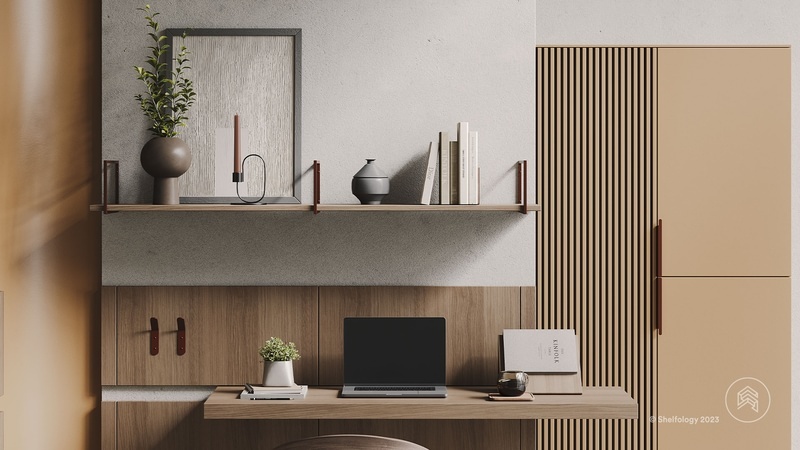
In a minimalist home, you’ll find either neutral or monochrome color palettes. Popular examples of neutral color schemes include black, white, and gray or beige, tan, brown, and white. Sometimes you can add a pop of color to a neutral palette, such as turquoise, to create an accent. But keep the accent to a minimum.
Another type of color palette found in minimalist interiors is a monochromatic palette. Monochrome color palettes contain one base color and an undertone with different shades of the base color, from dark to light. For instance, in a pink monochromatic color palette, you could see hues from a pinkish white to a darker pink such as maroon. Here are some neutral and monochrome color palette examples:
Select Meaningful Objects
The minimalist home is about selecting and displaying items you cherish on shelves and leaving out the rest. Examples could be showcasing your favorite books, precious family photos, a piece of art from your child, heirlooms and gifts from loved ones, or souvenirs from your travels. Do you like to bake particular desserts, for example, Italian pastries? There’s a home for them on a floating shelf in your kitchen.
Create a Cohesive Look With Book Covers
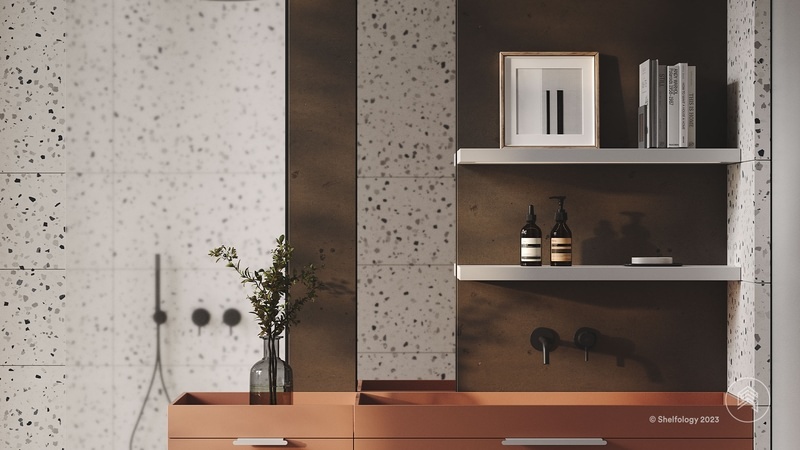
Do your books display too many colors on your shelves that detract from your minimalist color palette? No worries. You have options. You can easily fix that with book covers. All you need are book covers, scissors, and scotch tape. Look for covers or even decorative wrapping paper in solid colors that match your color palette –– get creative by choosing covers in printed designs to coordinate the look. Consider printing out or neatly writing author or title labels to identify your best reads.
Avoid Turning Books Around
Some people recommend flipping books around to show their off-white edges. However, that’s not particularly practical if you plan to read them, especially if you own many books in various categories. Another option is picking up books in coordinating book covers. You can find great options at bookstores, garage sales, and thrift stores.
Group Titles By Category or Author
Arranging books so they’re easy to find when it’s time to get lost in a good story. You can organize them by subject and author if you own multiple titles. Are you a fan of Hemingway or George R. R. Martin buff? Do you own a massive collection of Agatha Christie mysteries? Why not bundle them together? Note: Fiction tends to be a large category, so consider arranging fiction by type or decade. Some popular categories include:
- Travel
- Art
- Cooking
- Biographies
- Health and Wellness
- Crime Fiction
- True Crime
- Fantasy
- Historical Romance
Warm Things Up With Natural Decor
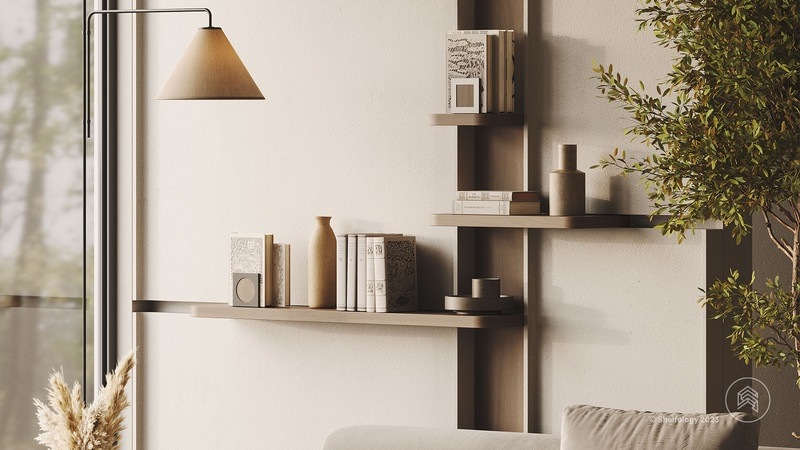
Natural materials and textures are a great way to warm up a room painted in a neutral color palette, such as a black and white theme. You can warm up your shelves while providing dimension and visual interest with designs and textures in like colors or with natural elements such as natural woven decor that complement any color palette. Vary decor in rough and smooth finishes and surfaces from stone to marble to add interest using decorative boxes, candle holders, vases, and other home decor items such as picture frames to display art and family photos. You can find inexpensive frames, journals, accent boxes, and decor in the following fabrics and textures:
- Woven jute
- Rattan
- Distressed wood
- Weaved fabrics
- Textured cotton
- Marble
- Faux snakeskin
- Faux alligator
- Faux fur
Use Bookends to Create Empty Space
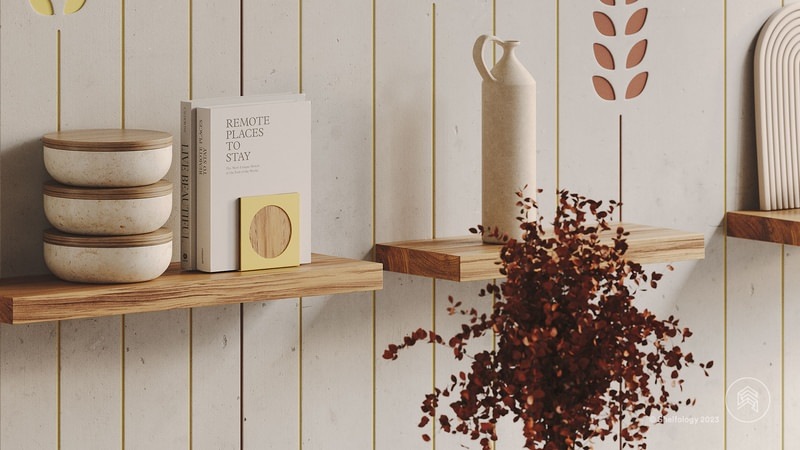
Bookends keep books from falling and prevent a shelf display from looking cluttered and messy. Bookends also help to create empty space –– a must in minimal design. Bookends come in wood, metal, and concrete, such as Shelfology’s popular concrete book wedgie. Make sure that whatever you use for a bookend, whether a standard bookend or a rock, is heavy enough to handle your books, so they stay propped up and pretty and don’t come tumbling down on their spines.
Quick Tips for Displaying Books and Decor on Shelves
The following tips will help you display shelf items like a true minimalist.
- Stack three books horizontally with a decor item like a beautiful plant on top.
- Vary vertical and horizontal groupings to add interest.
- Use picture stands to display books like art.
- Highlight a unique item with a downlight, such as your newborn’s framed handprint or a signed photograph from Ann Geddes.
- Layer books and objects by placing smaller pieces before larger ones.
- Group items of three in different sizes. Consider combining a tall thin decorative bottle with one fuller and another that is small and short.
- Use different weights and thicknesses to vary the appearance.
- Contrast dark with light colors such as black and white.
- Leave space between each cluster of objects and books.
It’s no secret that shelfologists love minimalist design for floating shelves, desks, and nightstands. For some creative, well-edited minimalist ideas and inspiration, check out our lookbook page filled with shelf designs in various color combinations.




